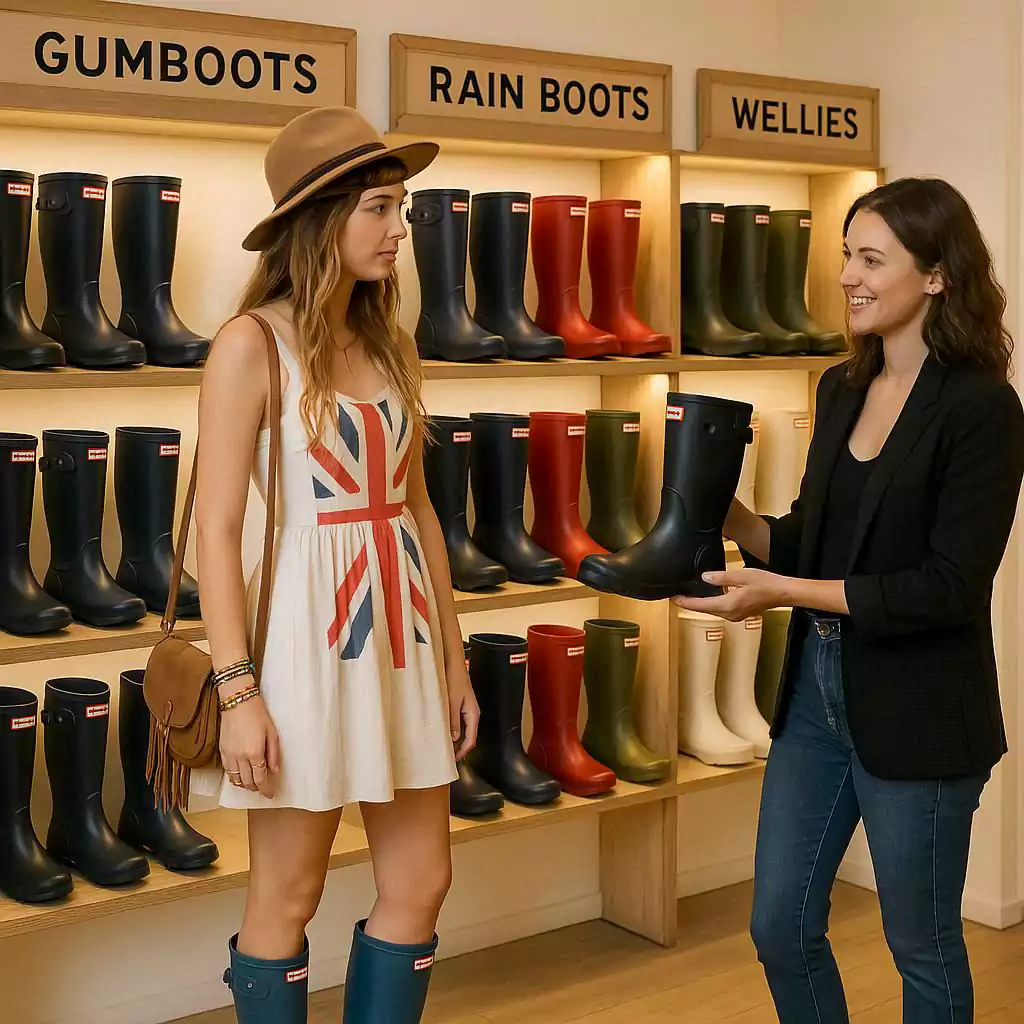If you’ve ever asked yourself “what is a gumboot?” or “what are wellies?”, you’re not alone. These waterproof boots are known by different names around the world, and their history, style, and functionality make them one of the most versatile types of footwear. Whether you call them gumboots, wellies, welly boots, or Wellington boots, this guide will explain everything you need to know.

What Is a Gumboot?
A gumboot is a type of waterproof boot, typically made from rubber or PVC, designed to keep feet dry in wet or muddy conditions. The name “gumboot” comes from the natural rubber, or “gum,” traditionally used to make them. Today, gumboots are commonly worn in rural areas, on farms, at festivals, and in cities during rainy weather.
What Are Wellies?
If you’ve wondered “what are wellies?” or “what is a wellies boot?”, the answer is simple: wellies (short for Wellington boots) are the same as gumboots. In the UK, Ireland, and other parts of Europe, people usually call them wellies or welly boots, while in countries like South Africa, New Zealand, and Australia, the word gumboots is more common.
Wellies were originally inspired by the Duke of Wellington in the 19th century, who popularized knee-high leather boots for horseback riding. Over time, these boots were redesigned in rubber to provide waterproof protection, and they became an essential part of everyday wear in wet climates.
What Are Wellington Boots?
Wellington boots, also known as wellies or gum boots, are waterproof boots designed to handle rain, mud, and outdoor work. They are typically knee-high, though shorter ankle-length versions are also popular today. When people search “what are Wellington boots?” or “what are gum boots?”, they’re referring to the same footwear—boots that keep your feet dry and protected.
What Are Gumboots For?
If you’re asking “what are gumboots for?”, the answer is: almost anything involving wet, muddy, or messy conditions. Gumboots and wellies are used for:
- Rainy days in the city – keeping your feet dry on flooded sidewalks.
- Outdoor festivals – especially music festivals known for muddy fields.
- Gardening and farming – providing protection against dirt, water, and chemicals.
- Fishing and boating – offering grip and waterproofing.
- Work environments – from construction sites to food processing plants.
Because of their durability and practicality, gumboots are considered a must-have in many households.
Wellies, Wellys, and Welly Boots – Same Thing, Different Names
When people type “what are wellys” or “what are welly boots”, they’re simply referring to wellies (Wellington boots). The spelling variations come from regional differences and casual use, but they all mean the same: waterproof boots that combine practicality with style.
Why Are Gumboots and Wellies So Popular Today?
Modern gumboots and wellies are not only functional but also fashionable. Designers now produce them in a wide range of styles, colors, and patterns. From classic black or green boots to trendy floral or neon versions, there’s a pair of wellies to match every wardrobe.
Thanks to this versatility, wellies have become more than just workwear—they’re also a stylish statement piece for rainy-day fashion.
So, what is a gumboot?
It’s the same as a welly boot or Wellington boot—a waterproof boot made to keep your feet dry. Whether you call them wellies, wellys, gumboots, gum boots, or Wellington boots, they all serve the same purpose: combining practicality, durability, and style in one timeless piece of footwear.
If you live in a rainy climate, spend time outdoors, or just want reliable protection for your feet, gumboots and wellies are the go-to choice.
